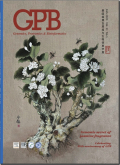Robust Benchmark Structural Variant Calls of An Asian Using State-of-the-art Long-read Sequencing Technologies
摘要The importance of structural variants(SVs)for human phenotypes and diseases is now recognized.Although a variety of SV detection platforms and strategies that vary in sensitivity and specificity have been developed,few benchmarking procedures are available to confidently assess their performances in biological and clinical research.To facilitate the validation and application of these SV detection approaches,we established an Asian reference material by characterizing the genome of an Epstein-Barr virus(EBV)-immortalized B lymphocyte line along with identified benchmark regions and high-confidence SV calls.We established a high-confidence SV callset with 8938 SVs by integrating four alignment-based SV callers,including 109x Pacific Biosciences(PacBio)continuous long reads(CLRs),22 x PacBio circular consensus sequencing(CCS)reads,104x Oxford Nanopore Technologies(ONT)long reads,and 114×Bionano optical mapping plat-form,and one de novo assembly-based SV caller using CCS reads.A total of 544 randomly selected SVs were validated by PCR amplification and Sanger sequencing,demonstrating the robustness of our SV calls.Combining trio-binning-based haplotype assemblies,we established an SV benchmark for identifying false negatives and false positives by constructing the continuous high-confidence regions(CHCRs),which covered 1.46 gigabase pairs(Gb)and 6882 SVs supported by at least one diploid haplotype assembly.Establishing high-confidence SV calls for a benchmark sample that has been characterized by multiple technologies provides a valuable resource for investigating SVs in human biology,disease,and clinical research.
更多相关知识
- 浏览7
- 被引0
- 下载1


相似文献
- 中文期刊
- 外文期刊
- 学位论文
- 会议论文



 换一批
换一批 换一批
换一批



